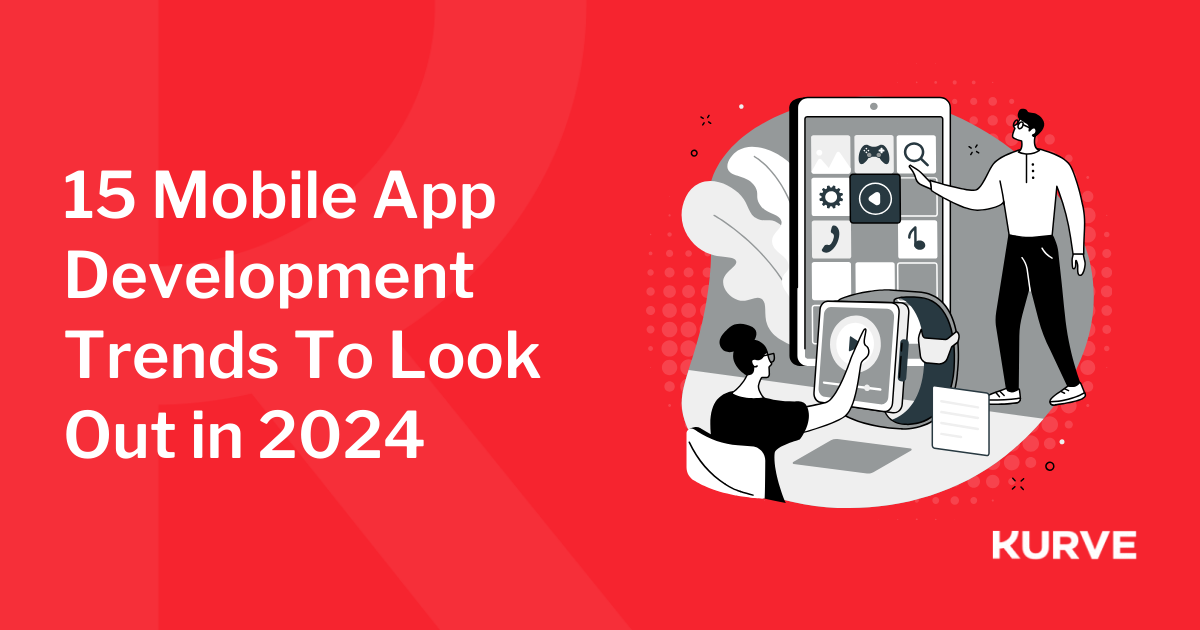Top Digital Transformation Challenges for Large Organisations
One would like to assume that digital transformation has been achieved already. Unfortunately, the fact that so many large organisations lag behind in this regard will surprise few. The influx of an all-encompassing digital world has been quick, to say the least. This revolution has paralysed some corporates, leaving them scrabbling to transition to a more digitally-enabled operation.
Yes, these large businesses have vast coffers, full of human and monetary resources that could be dedicated to a comprehensive digital shift. But they also have complex processes, legacy systems, longstanding employee structures, and many other headaches.
In this article, I’ll look at some of the major barriers to digital transformation for large organisations. I’ll explore some ways in which to overcome them, and address the myths and common misconceptions. Due to the nature of my role and experience, this will place emphasis on digital transformation for marketing purposes, but I hope to provide a valuable perspective on its broader implementation.
An overview of digital transformation
In his CIO article, Bill Schmarzo defines digital transformation as the following;
“Digital Transformation is application of digital capabilities to processes, products, and assets to improve efficiency, enhance customer value, manage risk, and uncover new monetization opportunities.”
His comprehensive piece provides the tangible example of a grocery business, and draws the stark contrast between traditional business models and the new capabilities demanded by a modern economy “powered by customer, product, and operational insights – to enhance customer value, physical facilities, products and processes.” It’s well worth a read.
I was also pointed to an article on digital transformation from the perspective of software developer, Riccardo M Bennett-Lovsey. His view is somewhat more critical of the terminology.
“The concept of “Digital Transformation” is merely a reiteration of the change and innovation in which the software industry has been participating since the invention of the first digital transistor. In some ways the term is largely redundant: can anyone demonstrate a time when digital technology has not been transforming the world? If anything, dramatic systemic change should be considered business-as-usual for software development.”
For the sake of argument, let’s acknowledge that the term “digital transformation” does have relevance, despite its obvious limitations and its relative vagueness. There is a requirement for every enterprise to adapt and engage with digital across the board, from operations to marketing. That’s a fact.
With this in mind, what are the barriers to achieving full digital transformation in a large organisation?
The barriers to digital transformation
Digital transformation is difficult, and here are some of the reasons why.
Internal buy-in
Large organisations have multiple layers, whereas startups and SMEs can get policies through with relative ease. Most commentators agree that digital transformation can really be labelled as a business transformation. Therefore, those in charge have a massive stake in the process. High-level boards can be cautious entities, sometimes emerging as a blockage to critical fast-paced change.
A report by Tuck Rickards and Rhys Grossman on Harvard Business Review cited that although “63% of executives say that the partnership of the board is critical to the success of transformation efforts, only 27% report that the board serves as an advocate for current strategies.”
The pair separate mature modern leaders into four categories; digital thinkers, digital disruptors, digital leaders, and digital transformers.
“As companies now look to incorporate their early digital investments into a more systematic, data-driven, end-to-end strategy, their leadership needs have evolved. Rather than placing an emphasis on disruptive forces, boards are increasingly seeking directors who bring operational capabilities and who could guide the re-engineering of the entire organization.”
In a nutshell, leaders and board members not only need to be supportive of digital transformation, but they must have measured experience and the ability to oversee initiatives for the long-term sustainability of the business. General buy-in should be a given, but proactive leadership is needed.
Company culture
It’s not just the board that must adopt radical changes within the business. Every executive within the organisation must buy into a culture of change, allowing for the efficient adoption of digital technologies in everyday operations, sales, marketing, and HR. This requires a shift in culture, and a receptiveness from top to bottom within the organisation.
This is reflected in an article by Mindi Chahal on Marketing Week.
“Once senior leaders are on board, it is also important to ensure that any changes are shared with the rest of the company. Digital transformation is about adapting the culture of the business and the way it operates to work with new technology, rather than making the chosen technology stack fit.”
I also spoke to Nick Seagrave, the Digital Transformation Manager at Hampshire Cultural Trust. As his job title suggests, it’s his responsibility to manage full digital transformation for the organisation. This brings many challenges.
“Currently we have a large decentralised team from varying backgrounds across heritage, arts, and culture. This presents obvious difficulties. There is very limited digital expertise and a shortfall of tech-savvy understanding across the entire organisation. Our internal communications are limited to email, but I’m testing Slack, Basecamp, and other collaboration tools to see where we can find improvements. The major challenge ahead will be one of adoption; getting people to use and buy into the systems that we implement. There’s also a difficult choice between an innovative tech stack or a catch-all solution powered by Microsoft. Of course, many stakeholders favour the latter, whereas I see huge benefits in the former.“
Changing company culture does not happen overnight. It requires a sustained effort to change habits and adapt the character of the business. There will always be opposition, and sometimes people feel backed into a corner. Ultimately, it’s of critical importance to the organisation’s survival to adopt a more inherent (and coherent) digital policy. This benefits everybody, but it can be difficult to communicate effectively.
Digital marketing complexity
As the realm of possibilities within digital marketing constantly expand, so too does its complexity as a discipline. Becoming an expert digital marketing takes years, and the ability to account for nuance and context only comes with direct experience, colossal failures, and sustained success. You certainly don’t want a GP doing heart surgery, and neither do you want a PPC marketer taking care of your events.
This issue is somewhat similar to company culture and team buy-in issues. People are at the heart of successful digital transformation. An organisation needs skilled and experienced people, and those who can deal with the complexity of digital channels and the variety of measurables. With the huge variety of channels, marketers should be able to test and determine the most suited according to business goals.
Above all, specialists should understand the context which surrounds their position. They should be able to see the wood for the trees and not be overwhelmed by the vastness of digital. They should be able to integrate their role with other key personnel and remain committed to the common goal. Without this, digital transformation is incredibly difficult to achieve.
Also read: Fatal Mistakes: 10 common startup failures
Silos
Digital transformation cannot work in a silo. It must be all-encompassing, integrating various elements of the business into one mission and one way of working. It’s hard to get momentum going when one leg is faster than the other, and renders it impossible to keep up, let alone win the race.
According to a study by 451 Research, 33% of enterprise leaders believe that “organizational silos and the need to uncouple legacy practices” represents a significant barrier to digital transformation. The siloed approach to business is recognised as outdated, but many large organisations still work this way. Efforts should be made to shift to a different mindset, but in the meantime how can businesses avoid the issues that silo structures cause? Ravi Krishnamoorthi favours a representative approach in his Fujitsu article.
“I believe it is better to have a group of people, all of whom are invested in the project, driving the whole outcome. This group is ideally composed of people from different functional groups across the business, not just technologists. And that’s because each member of the group needs to keep their eye on how their function can contribute to the overall objective.”
Adam Burns believes that digital transformation could actually signify the end of siloed business practices. The requirement for a more integrated digital approach is likely to change organisational structure forever.
“The most successful, most ‘transformed’ companies I have spoken with recently have one thing in common… Small, multi-disciplinary teams focused on discovering and responding to customer problems quickly, their work guided and supported by a relentless obsession with usable data.”
With regards to digital transformation in marketing, Adam cites the recent work of Adidas as inspiration. They’ve spotted the need for quick-fire responsiveness and local relevance, and have avoided the cumbersome centralised approval process that so often paralyses large companies.
“The company built teams in what it considers the world’s most culturally important cities. Each team is empowered to create and distribute relevant content and respond to trends without HQ approval, largely because each one contains all the skills you need to make good decisions quickly – from legal to PR to social media to data analytics. Nimble, agile, smart: small wonder Adidas is killing it.”
This enables Adidas to create compelling content more efficiently than the competition, thereby adapting to the relentless demand of digital marketing channels.
Upskilling challenges
Upskilling traditional executives in a short timeframe is not realistic. With regards to digital transformation in my area, marketing, the individual channels are not hard to grasp. But achieving full competence (indeed, excellence) across 15 different channels, paired with analytical tools plus an understanding of the strategic pillars? Not feasible.
This presents a huge problem for large organisations when pursuing digital transformation within the marketing context especially. A report by the Digital Marketing Institute found that 59% of marketers in the UK feel they need to improve their digital marketing skills to progress their future career. This was echoed in the US, whereby 67% of marketers felt the same. In Ireland, 80% answered the same. Large brands must invest heavily in mentorships, training programmes, and incentive schemes for existing staff. But it’s a slow and expensive process.
What can be done? Some takeaways
There are a number of ways to overcome the barriers to digital transformation. Here are just a few ideas. Again, I will lean most heavily on the digital transformation of marketing activities. This isn’t gospel, but this advice is gleaned from real experience and should provide useful starting points.
Review the strategy
The first port of call is always to review the holistic marketing strategy and determine where digital fits into the mix. Businesses must then dig much deeper to determine where each channel fits into the digital mix. A meticulous strategic review (and audit) will uncover the gaps and enable planning. This is preferable to constant firefighting.
Focus on specifics
Focus on your core channels and the areas of specific business needs, rather than attempting to upskill team members broadly and improving a general skillset. Some aspects of digital transformation are more time-critical than others, and can have a more immediate positive impact. Broad improvements are good for a team, but focusing on specific core areas will provide impetus.
Support structure
This focus on specifics will require a solid support structure, probably with assistance from external consultants and specialists. This is where I’ve had direct experience of the digital transformation process, as an outsourced CMO working on-site at client offices. For large organisations, it’s important to have an objective voice which provides clarity on key topics.
Measure and attribute
Move away from purely top-level awareness activities and focus on measuring your share of voice and share of market. These two metrics are linked. Attribution is fed by the following point...
Invest in data
Invest in gathering, understanding, and applying data. There are countless subscription-based tools out there which simplify the data’s visibility, spanning every area of business from marketing to team productivity. But you need the team to first understand the importance of data, with support from the business in terms of infrastructure, training, and resources. A data-led approach is critical.
Be patient
Evolution takes time, and so does changing traditional organisational paradigms. It’s complex to unpick years of established processes, but with the right overarching strategy and expertise in the most critical areas of your business, digital transformation will occur successfully, if not entirely smoothly.
Summary
The road to full digital transformation is long, and the barriers placed along the route are high. Longstanding organisational structures make sweeping changes difficult, both in terms of systems and personnel. This issue can be overcome with careful planning, persistence, and HR expertise.
When transitioning from traditional to digital marketing activities, large organisations need the right support in specialist areas. This is preferable to general upskilling with a broad brush, especially when the business needs immediate impact. Digital transformation must infiltrate company culture and be fully supported by business leaders - not by paying lip service to its importance, but with proactive ambition.
Do you have experience of digital transformation in a large organisation? Get in touch on Twitter or LinkedIn to let me know what your biggest challenges were.
Also read:


